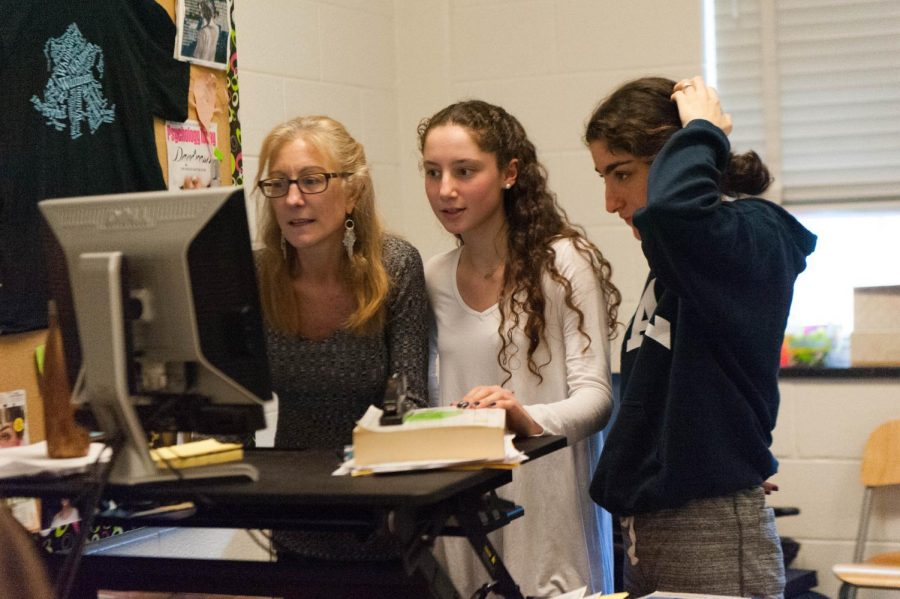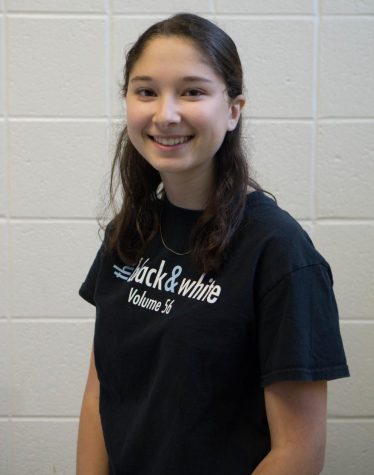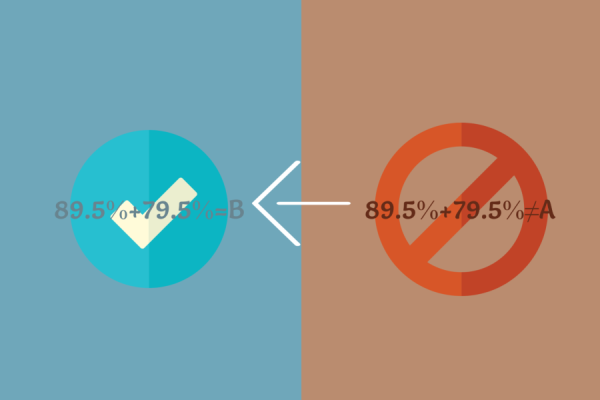Psyched about psych journal: student-run publication opens doors for aspiring psychologists
Psychology teacher Marisa Del Savio helps students with the Psych Journal. Whitman’s Psych Journal is the only student-run psychology journal in the country. Photo by Katherine Luo.
December 10, 2017
In eighth period, room C-242 becomes a makeshift lab. Editors comb through submission after submission, meticulously editing experiment reports and articles as a deadline approaches. When Whitman’s nationally recognized Journal of Psychology is finally sent to print, students mail it to psychology teachers nationwide.
The Psych Journal is the only student-run, high school psychology journal in the country. Psych Journal is distributed both in print and online to over 1,000 AP Psychology teachers who use it in their classrooms to demonstrate proper research and experimentation at a high school level, advisor Marisa Del Savio said.
Psych Journal’s four editors select the most thought-provoking, well-researched and professional studies for publication, editor Lars Crovetto-Soholt said. Though editors select articles, all journal members benefit from exposure to a variety of topics.
Last issue, the Psych Journal received more than 30 submissions, including two from Beijing No. 4 High School International Campus in China.
“We’re trying to spread interesting information about psychology to people who are interested in the topic,” Crovetto-Soholt said. “We want to present it in an entertaining way so people get interested in psychology.”
Because Psych Journal is a student-run publication, Del Savio’s role is limited to coordinating new staff and copy-editing articles. This independence allows students to grow as both leaders and team players, she said.
“Once in awhile I step in because I’m interested in it, but they just do such a great job making decisions, jumping on ideas and going through with them,” Del Savio said.
The Journal is divided into two sections: Experimental Psychology, in which students world-wide submit studies and experiments, and Inside Psychology, in which students submit a well-researched psychology paper without an experiment. Psych Journal’s staff members contribute articles to both sections alongside outside submissions.
Business manager Bridget O’Brien organizes the journal’s budget, communicates with staff applicants and students who submit, and promotes and distributes the journal. This is often a daunting task, she said.
“When we’re at the post office making sure that all the forms are filled out correctly, it’s really stressful, because that could mean that none of them would get delivered,” she said.
Students apply to the journal the first semester of their junior year through an application process that includes a written application, multiple in-person interviews and a mock editing exercise.
This in-depth process ensures that Psych Journal’s staff, which changes yearly, has diverse skills but can also work as a team. The 12 selected members become fast friends, Crovetto-Soholt said.
“I think most people apply not only as a way to go into psychology—which they are really interested in—but also to have a group of people that are different from their friends,” he said. “We all get along very well. It’s a change from the normal group you would hang out with.”
The journal has inspired former members to major in psychology or take psychology courses in college, Del Savio said. Two years ago, the American Psychology Association invited the Psych Journal staff to speak on a panel discussion in front of other high school students interested in neurosciences.
Still, to Del Savio, Psych Journal’s most important impact is on the minds of its own staff.
“It’s inspired them to realize that even though they’re young, they can be part of something that’s important,” she said. “It teaches them that they can effect change.”
Journal intern Sarah Hirsh works with both editors and business managers. To Hirsh, the best part of Psych Journal is its inclusive atmosphere.
“Just because I’m a journal intern, it doesn’t mean that I can’t associate with the editors,” she said. “There’s just one solid group of people that are all working towards one common goal.”











